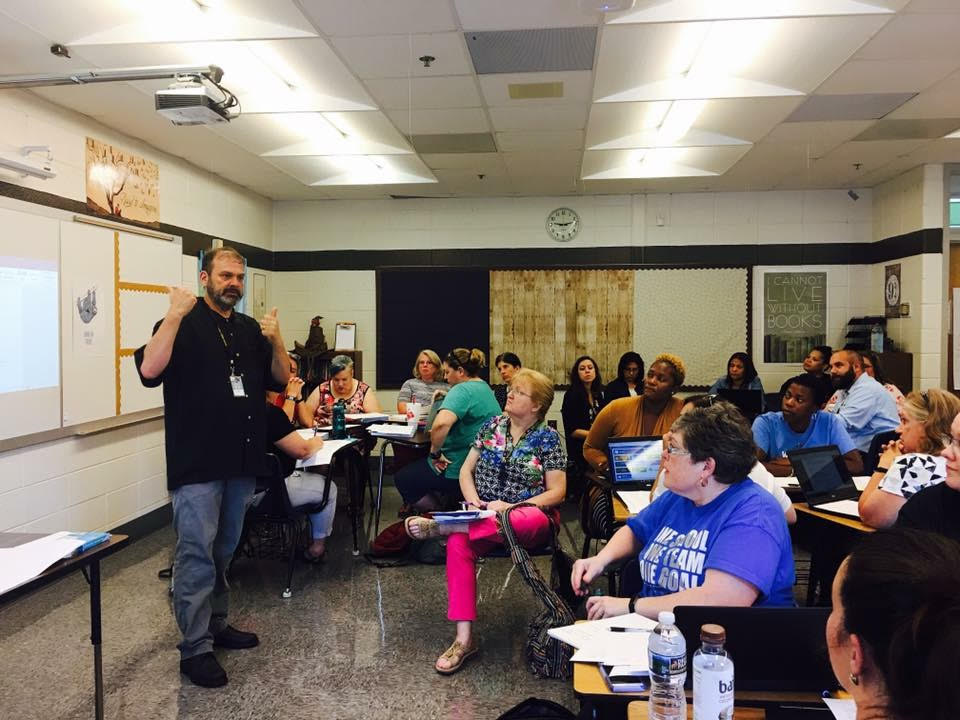
One of my favorite ways to get to know students is to lead a discussion. An organic, well-facilitated discussion can be a sublime experience for both teachers and students. As the discussion leader, your role in coordinating students’ communication is multifaceted. First, you need to think about WHY you want the students talking. No one wants to have the “crickets” experience.
The WHYs of student discussion
- Determining what students know
I teach American Literature on a semester calendar. Since there is an overlap between US History and my class, I might need to figure out if the students’ US History class the previous semester covered a topic, for example, Patrick Henry’s “Speech to the Virginia Convention.” A little verbal probing will assess students’ awareness of the famous takeaway, “Give me liberty or give me death!” Do they remember why Henry spoke and the outcome of his speech? The context and occasion, or the exegesis, are vital to understanding the historical implications of this speech- why it was so daring and risky and why it is so important leading up to the revolution.
- Connecting to topical or current events
When a nationwide event happens- or even a popular meme- students want to talk about it. If students ask you to play a trendy meme in class, always preview it before you show it. Ask them to email it to you and you can decide for the next day. As for current events, again … preview the event and have a couple of resources available that give legitimate and trustworthy sources. This way, you can provide facts, a pro/con, or an extension for students to research on their own. I like to use the website, Blendspace, to post a variety of curated resources for students. Here is a one a prepared to teach the novel, Cold Mountain Check out the lesson Cold Mountain on Tes Teach.
- Building relationships
Students look to you to provide moral leadership. One of the best conversations I have each year is about superheroes. Kids love superhero films, and most have seen the latest blockbuster. There are so many issues that arise in the worlds in which teenagers exist. For example, to save the universe, should superheroes’ only goal be the defeat of the archvillain? What about the innocent bystanders? How about the property damage? Will there be any long-term implications from the destruction? Who pays?
Students might not want to weigh in on a question dealing with literature but might feel more comfortable answering a moral question when presented in the realm of superheroes. In Washington Irving’s short story, “The Devil and Tom Walker, the protagonist chooses to align himself with the devil to gain riches and popularity. However, the devil comes to get his due at the end of the story.
Irving’s story first appeared in an 1824 collection, but it is based on the age-old Faustian bargain. Students need to be exposed to dense, pre-20th-century text because they will see it referenced on standardized assessments. For more practice with American classic short stories, here is a lesson I wrote about the Dark Romantics.
Try comparing it to something contemporary like superheroes. Ask your students if they would rather have the power of flight or invisibility.
The character Thanos, most recently seen in The Avengers Infinity Warseems to be amoral, advocating for his interpretation of the greater good.
“On one side, you have Captain America’s deontological perspective, typically associated with philosopher Immanuel Kant, which says (to, uh, simplify considerably) that every human being is an end in themselves, a basic moral unit due basic moral consideration, not a means to other ends. Kant said that you should act toward others only in a way that you would be willing to make a universal principle for all moral beings. You couldn’t make “sacrifice others for the greater good” a universal principle, lest everyone end up sacrificed.
On the other side, you have Thanos’s utilitarian perspective, typically associated with philosophers Jeremy Bentham and John Stuart Mill, which says that the goal should be the most good (happiness, well-being, utility, what have you) for the most people. The greater good, not the individual, is the primary moral consideration.”
- Reviewing the lesson for an assessment
Decide ahead of time whether you want to do a call and response kind of discussion or call on specific students. There are benefits and drawbacks to each style of discussion. For call and response, have a review sheet so students can take notes as the class discusses the correct responses. You can even provide an incentive for students to take good notes by letting them use their review sheet on the test. In this case, the review sheet should list themes or terms, not the actual answers.
Call and response is also useful for students who are shy and for students who might not have a complete understanding of the material. Hearing the comments of their peers in a choral response is a low stakes peer-to-peer experience that might boost comprehension. Likewise, shy students might feel comfortable chiming in responses with peers because the social stigma of getting an answer wrong is eliminated. Mix it up, though. Don’t rely only on call and response.
If you are going to call on students, think of your purpose ahead of time. Do you just want a quick review so terms and concepts are discussed orally before the assessment or are you interested in parity, so all students get a chance to respond? If the latter is the case, use a photocopied seating chart to keep track of the speakers.
Don’t put students on the spot. If they can’t answer, move on. Think of your overall goal- a review or a speaking practice.
